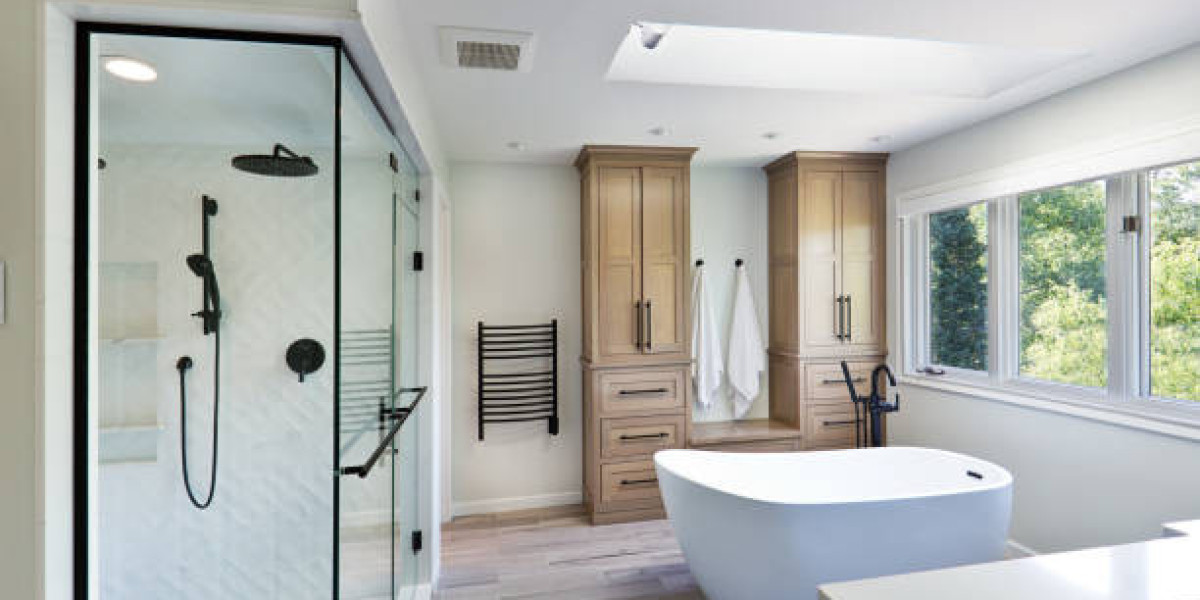Bathroom remodeling is one of the most impactful and rewarding home improvement projects you can undertake. Whether you're updating a small powder room or doing a full-scale renovation of your master bath, remodeling enhances both the aesthetics and functionality of your space. It can also significantly increase the resale value of your home. This comprehensive guide will walk you through everything you need to know about bathroom remodeling—from planning and design to construction and finishing touches.
1. Why Remodel Your Bathroom?
There are many reasons homeowners choose to remodel their bathrooms:
Outdated fixtures and design: Modern trends emphasize sleek designs, energy efficiency, and spa-like ambiance.
Improved functionality: Changing the layout, expanding the shower, or adding double vanities can make daily routines easier.
Increased home value: Bathrooms and kitchens often sell homes. A well-designed, updated bathroom can boost your property’s value.
Better energy and water efficiency: New toilets, faucets, and lighting reduce your environmental footprint and utility bills.
Repair and damage control: Mold, mildew, water damage, and plumbing issues are common reasons to start a remodel.
2. Planning Your Bathroom Remodel
A successful remodel starts with a solid plan. Before you begin tearing down tiles or buying new sinks, take time to define your goals.
Set a Budget
Basic remodel: $3,000–$7,000
Mid-range remodel: $8,000–$15,000
Luxury remodel: $20,000+
Be sure to allocate 10–20% for unexpected expenses.
Assess Your Needs
Think about your household:
Do you need more storage?
Is this bathroom shared or private?
Do you want a tub or just a walk-in shower?
Create a Design Concept
Collect inspiration from magazines, Pinterest, or showrooms. Decide on:
Color scheme
Materials (tile, stone, paint, etc.)
Layout and floorplan
Style (modern, traditional, rustic, minimalist)
3. Choosing the Right Layout
The layout of your bathroom affects usability, comfort, and flow. Small bathrooms benefit from space-saving fixtures, while larger bathrooms offer more design flexibility.
Common Layouts:
Three-piece bathroom: Sink, toilet, shower/tub
Four-piece bathroom: Double sink, toilet, separate shower, and tub
Wet room: Shower area is level with the rest of the floor
Jack and Jill: Shared bathroom between two bedrooms
Working with a designer or contractor can help you make the most of your space.
4. Essential Bathroom Remodeling Elements
1. Fixtures
Toilet: Choose between wall-mounted or floor-standing, with water-saving features.
Vanity and sink: Undermount or vessel sinks paired with modern vanities offer style and storage.
Shower/Tub: Frameless glass doors, rainfall showerheads, freestanding tubs, and jacuzzi features are popular upgrades.
2. Flooring
Bathrooms need water-resistant, durable flooring:
Ceramic or porcelain tile
Luxury vinyl planks
Natural stone
Waterproof laminate
3. Lighting
Layered lighting is ideal:
Ambient: Overhead recessed lights
Task: Lights around the mirror for shaving or makeup
Accent: LED strips under vanities or in niches
4. Ventilation
Proper ventilation prevents mold and moisture damage. Install an exhaust fan rated for your bathroom size.
5. Storage
Consider:
Built-in cabinets
Floating shelves
Recessed medicine cabinets
Vanity drawers with dividers
5. Remodeling Timeline
Here’s a general idea of what to expect:
| Phase | Time Estimate |
|---|---|
| Planning & Design | 1–3 weeks |
| Permits & Orders | 1–4 weeks |
| Demolition | 2–5 days |
| Plumbing & Electrical | 2–7 days |
| Flooring & Walls | 3–7 days |
| Install Fixtures | 3–5 days |
| Painting & Finishing | 1–3 days |
| Total Duration | 3–8 weeks (project size) |
6. Hiring Professionals vs. DIY
DIY Remodeling
Good for cosmetic updates: painting, replacing fixtures, installing shelves.
Requires basic plumbing and electrical knowledge.
Cost-effective but time-consuming.
Hiring Professionals
Ideal for major renovations involving structural changes, plumbing, or custom work.
Ensures permits, code compliance, and high-quality finishes.
Includes general contractors, designers, plumbers, electricians, and tilers.
7. Bathroom Remodeling Tips
Measure twice, cut once—accurate measurements prevent expensive mistakes.
Don’t move plumbing unless necessary—it adds time and cost.
Go for timeless over trendy—neutral palettes and classic materials stay in style longer.
Maximize vertical space with tall cabinets or open shelves.
Waterproofing is critical—invest in quality waterproof membranes and grout.
Consider accessibility if aging in place or for multigenerational households—install grab bars, curbless showers, and wider doorways.
8. Trends in Bathroom Design (2025 Edition)
Smart bathrooms: Touchless faucets, smart mirrors with LED lighting, and digital showers.
Biophilic design: Natural elements like stone, wood, and plants.
Warm, earthy tones: Beige, taupe, terracotta, and matte black finishes.
Floating vanities: Clean lines and space-saving design.
Spa-like features: Steam showers, heated floors, and aromatherapy diffusers.
10. Conclusion
Bathroom remodeling is an investment in comfort, functionality, and value. Whether you aim for a luxurious spa-inspired retreat or a clean, minimal upgrade, planning and quality execution are key to success. Work with professionals where needed, stick to your budget, and focus on designs that suit both your lifestyle and long-term goals. A beautifully remodeled bathroom not only enhances your daily routine but also brings lasting value to your home.





